At Voorlinden, you can always see an exhibition featuring a selection of artworks from our own rich collection. We also make exhibitions entirely dedicated to one artist, often with works that are also borrowed. Our Highlights are always on display. Most of these artworks were created especially for this museum. They are all experiential works of art; you just have to experience them!
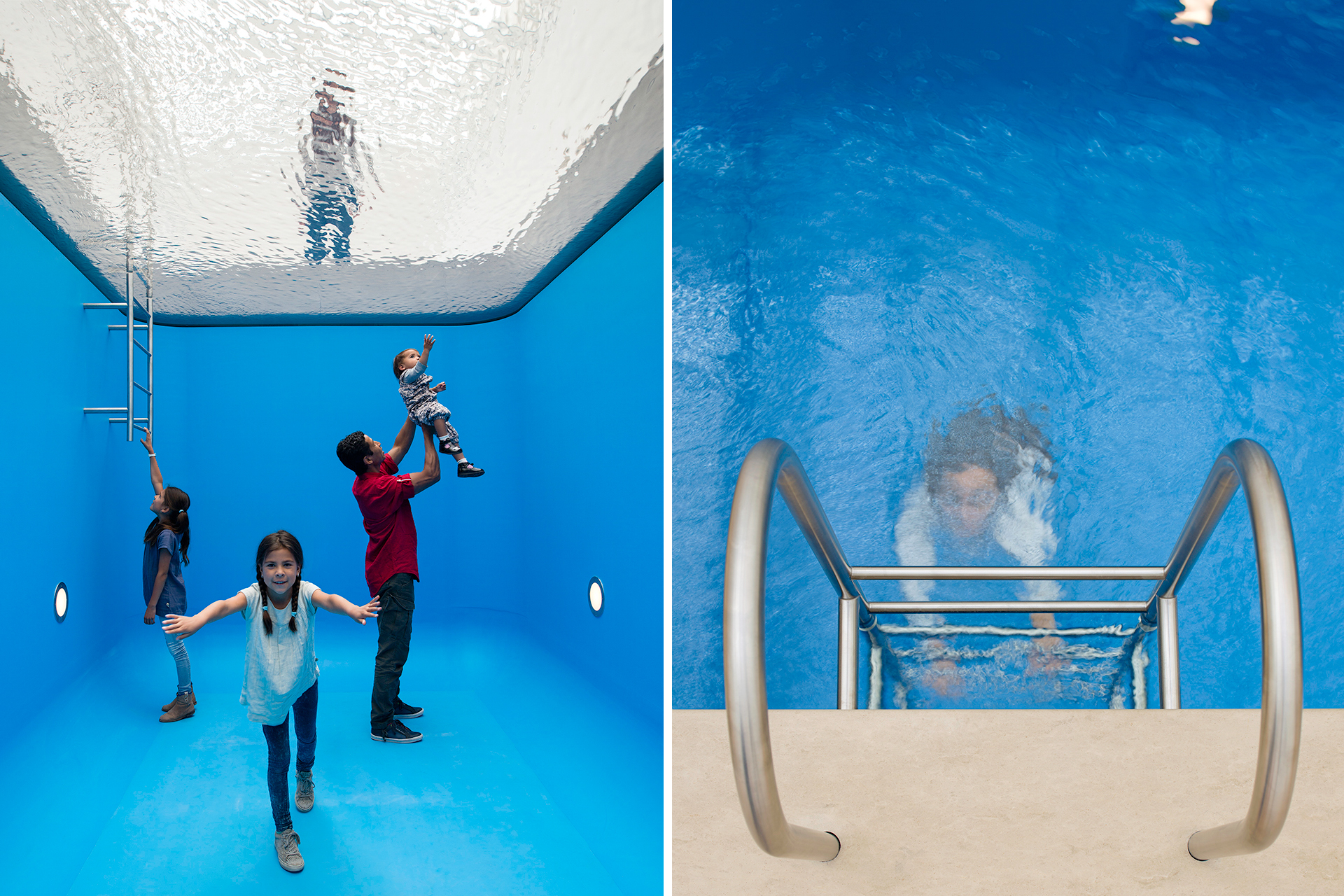
Leandro Erlich (1973), Swimming Pool, 2016
Photo: Antoine van Kaam
Leandro Erlich designed his Swimming Pool especially for Voorlinden. He gave his work all the characteristics of a real swimming pool, including the recognizable pool blue on the walls, the typical lamps and even a real stairway through which you seem to be able to descend. And yet as a visitor you can walk on the bottom without getting wet. Erlich frequently plays with the eye. He transforms everyday spaces into absurd situations. Erlich wants to create an experience that makes the viewer think about the reality around him. The work only really functions in its use by the public. Without people, the work is not complete, according to the artist.
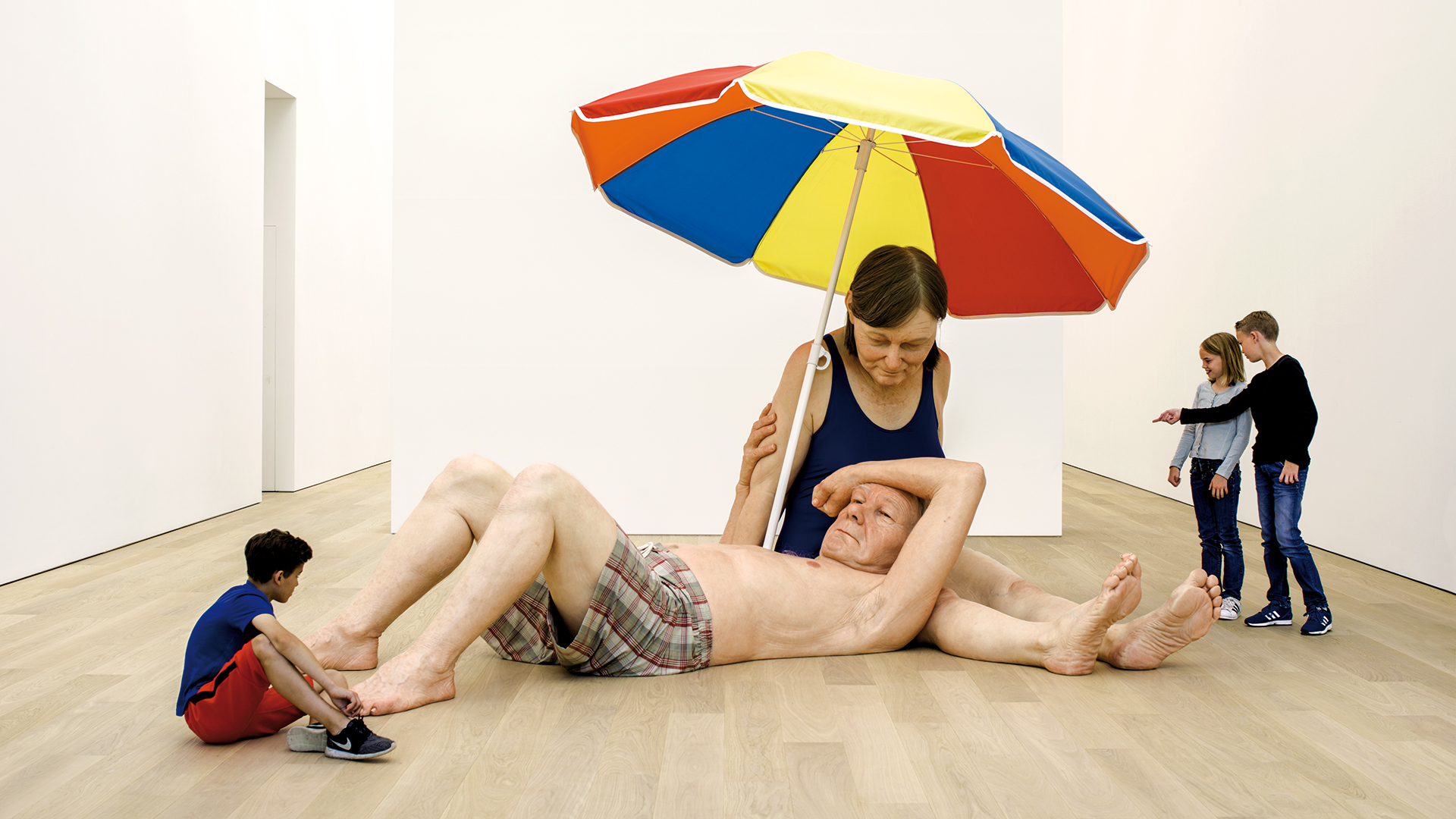
Ron Mueck (1958), Couple under an Umbrella, 2013
Photo: Antoine van Kaam
Ron Mueck creates hyperrealistic human figures which he details with utmost craftsmanship. They seem to be made of flesh and blood, but their scale turns them into fairytale giants. With Couple under an Umbrella (2013), the artist depicts ordinary people, but exactly twice our size. His figures are clearly individuals. Yet they are not portraits of existing people. They have something universal: every viewer can identify with them, despite their irregular size.

Richard Serra (1938-2024), Open Ended, 2007-2008
Photo: Antoine van Kaam
The sculpture Open Ended by the American artist Richard Serra weighs almost 216 tonnes. The corten steel work is 4 metres high, 18 metres long and 7 metres wide.
This is a piece full of contrasts: both heavy and elegant, industrial and organic, stately and playful, convex and concave. Six vaulted steel plates moulded together form a maze. Open Ended is a work best experienced by walking through it.
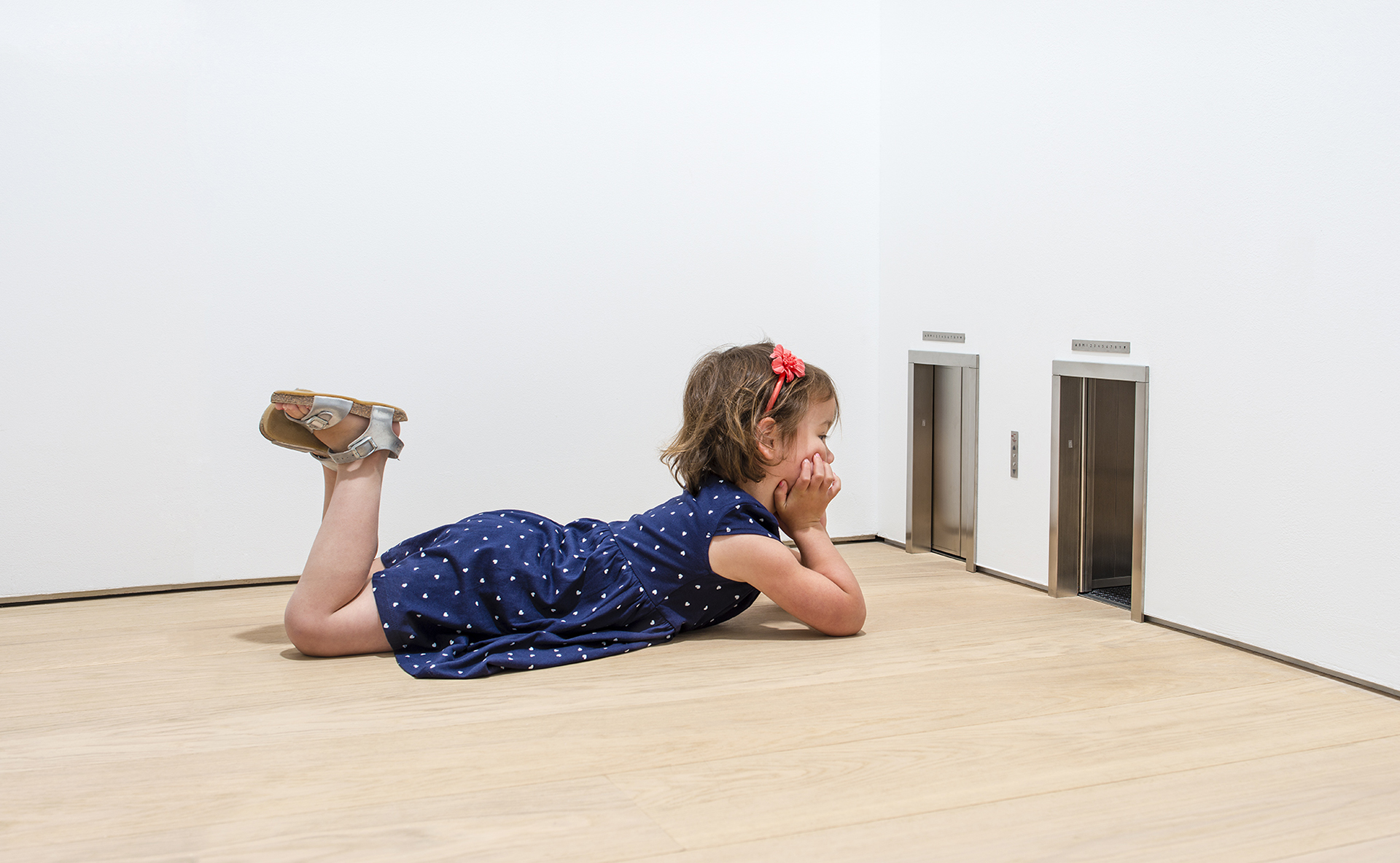
Maurizio Cattelan (1960), untitled, 2001
Photo: Antoine van Kaam
The museum has in built-in elevator that comes up just a little bit higher than a grown-up’s ankle, on a scale of 1:7,5. The lift cabin disappears to an unknown destination in a building that does not have any storeys. Cattelan plays a game of copying and scaling, which allows the spectator to look at reality from a different point of view. The moment of recognition is immediately followed by the feeling of alienation, which is exactly what the artist is aiming for.
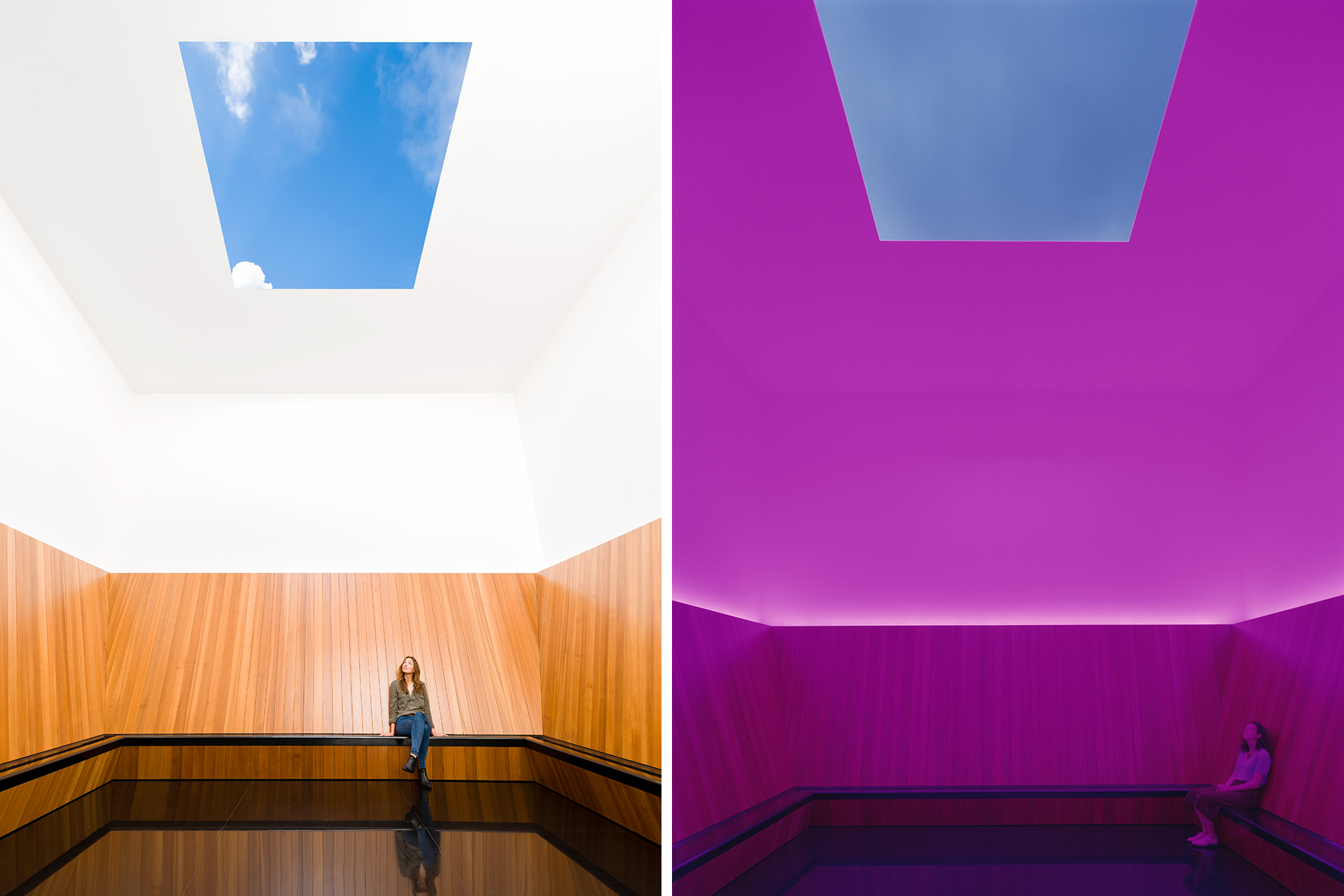
James Turrell (1943), Skyspace, 2016
Photo: Antoine van Kaam
Especially for museum Voorlinden, James Turrell (1943) designed a Skyspace (2016): a space with a square opening in the roof, through which you look straight up. This allows you to see the blue sky like you have never seen it before. If the weather is not so good, the roof is closed and you can see a light programme that Turrell composed especially for this space. In this programme, the artist plays with your perception and tries to make something as intangible as light tangible. For this Skyspace, Turrell also put together a Twilight Experience, a light programme that is precisely tuned to the Wassenaar twilight during sunrise and sunset. The soft, natural daylight contrasts with the bright, almost tangible colours of the lamps, and the result is truly breathtaking. This Twilight programme can only be experienced on special occasions – keep an eye on our newsletter and social channels for updates.

Roni Horn (1955), Untitled (“The immense accretion of flesh which had descended on her in the middle of life like a flood of lava on a doomed city had changed her from a plump active little woman … into something as vast and august as a natural phenomenon. She had accepted this submergence as philosophically as all her other trials, and now, in extreme old age, was rewarded by presenting to her mirror an almost unwrinkled expanse of firm pink and white flesh, in the center of which the traces of a small face survived as if awaiting excavation.”) , 2012-2013
Photo: Antoine van Kaam
These five cylindrical sculptures are made of solid glass – and very fragile! Roni Horn made them with very fine sand from northern Norway. This sand is so pure and clean, untouched by dirt or plastic, that the glass can match the transparency of water. Each sculpture weighs a whopping 4,500 kilos and was made in a terracotta mould, you can still see its prints. The title of this work is a quote from the novel Age of Innocence (1920) by Edith Wharton (1862-1937).
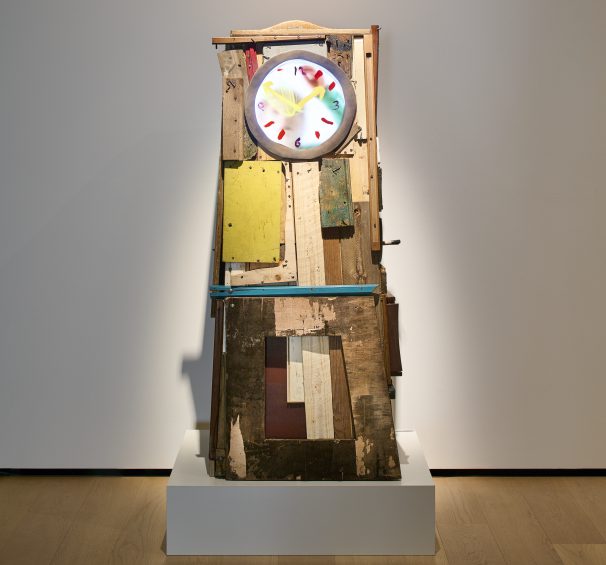
Maarten Baas (1978), Real Time Grandfather Clock, The Son, 2022 | Foto: Antoine van Kaam
In his Grandfather Clock series, Maarten Baas keeps track of time, each time as a different character. In this clock, he disguises himself as a Peter Pan-like character; someone who always resides between a state of adulthood and being a child. The clock casing of scrap wood, made as if it were a tree house, suits this theme. In the filmed 12-hour performance you see behind the milk glass, he marks the time with thick blobs of children’s paint.
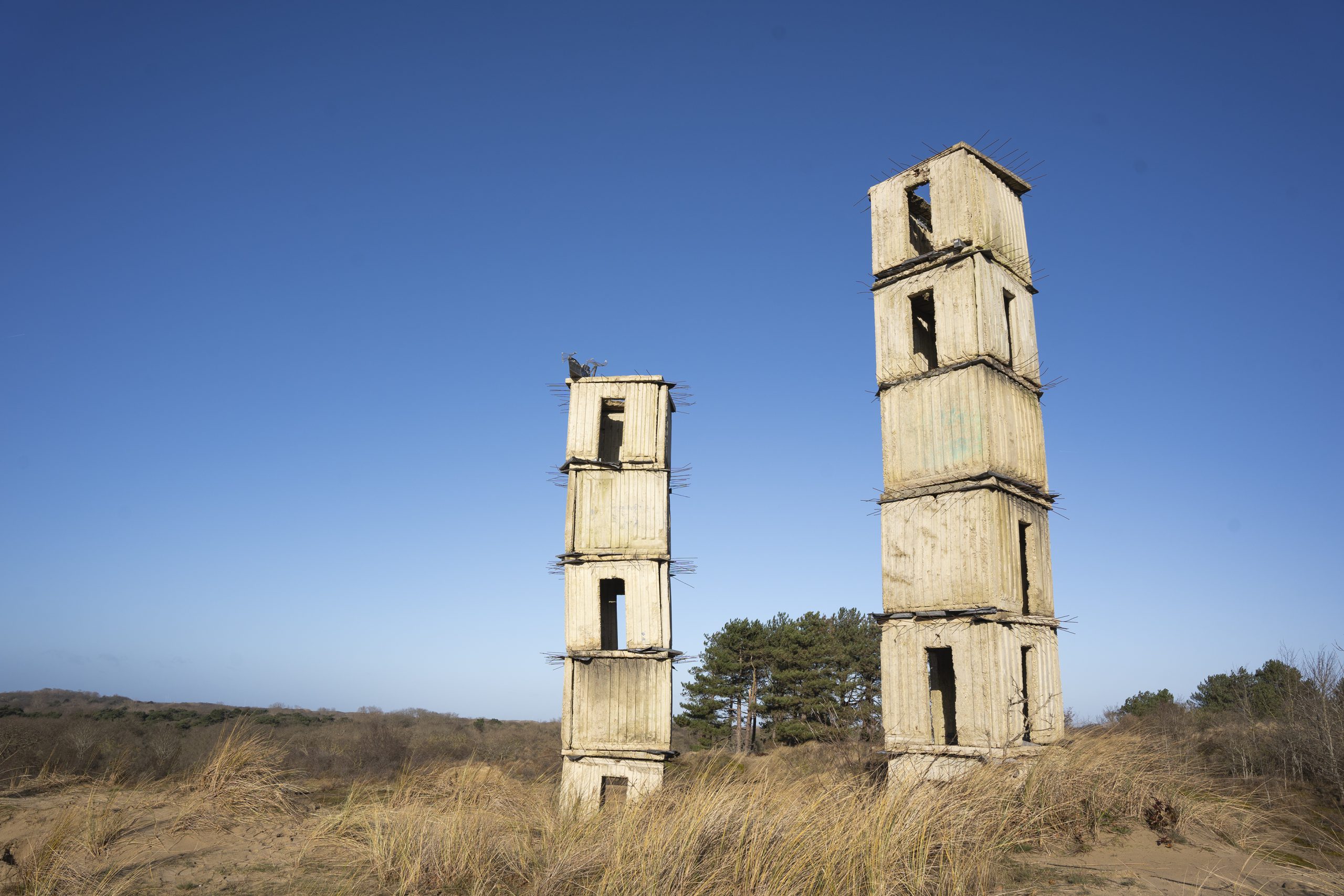
Anselm Kiefer (1945), Jericho, 2007
Photo: Twan Thio
On the Voorlinden estate you can find two towers by Anselm Kiefer of 15 and 17.5 metres high. The artist grew up in post-war, bombed Germany and as a child built towers with debris he found in rubble. He made these towers with blocks of reinforced concrete. Between the different parts and on top of one tower, he placed stacks of books. A ship balances on the other tower. The title refers to Jericho, one of the oldest cities in the world, whose fall and rebuilding is described in the Bible. Biblical stories, as well as themes of destruction and rebuilding, recur often in Kiefer’s work. The artist sees a certain beauty in ruins: ‘To me, they do not represent an end, but offer hope for a new beginning.’
